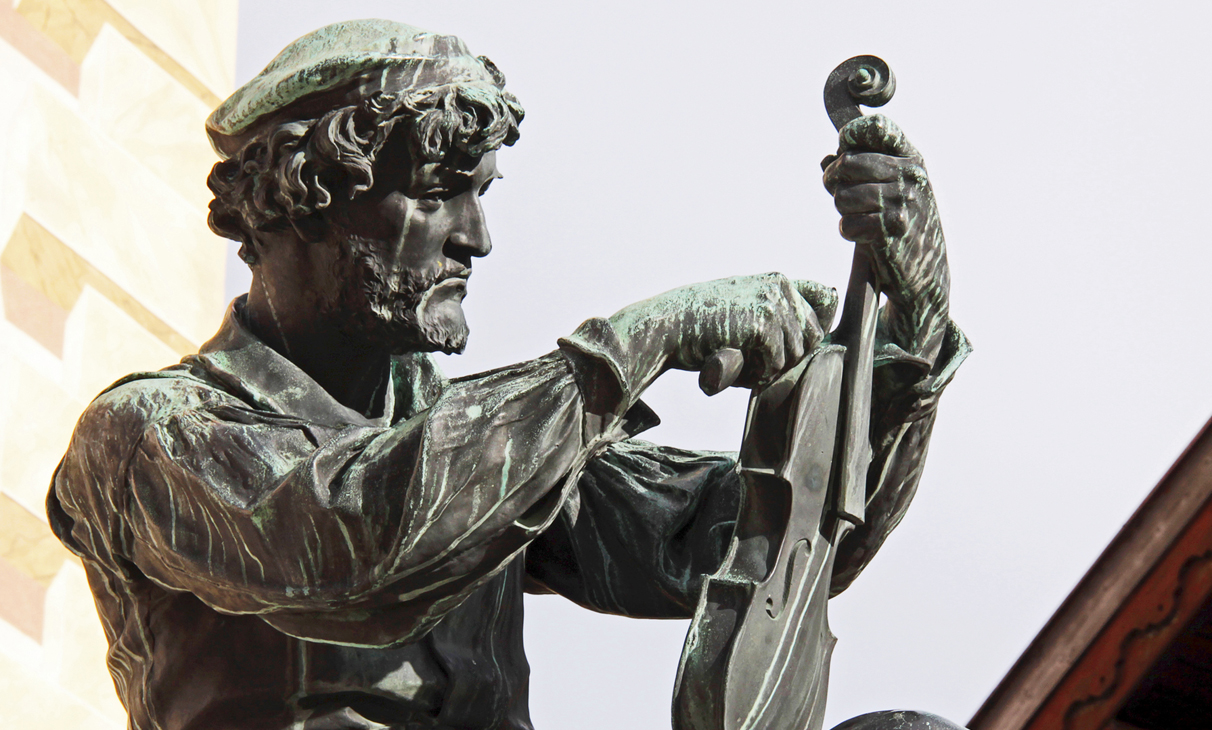Review
-
The Tradition of Violin Making in Mittenwald
Mathias Klotz (1653-1743) learnt the hand crafting of lutes in the workshop of a master from Füssen and then, between 1672 and 1678, he worked as a journeyman of the lute maker Pietro Railich, native of the German Allgäu region. Upon his return, Klotz opened his own workshop in Mittenwald around 1685/86, where he produced violins and lutes. Here, his three sons – Georg, Sebastian and Johann Carol – as well as several inhabitants of Mittenwald received training in the hand crafting of instruments. Among them there was also Andreas Jais (1685-1753). With his workshop Klotz became the founding father of the Mittenwald’s violin making, which still exists. Georg Klotz (1687-1737) and Sebastian Klotz (1696-1775) took inspiration from Nicola Amati and Jacob Stainer and developed the two violin models typical of the „Klotz school“. A second important style in the Mittenwald’s violin making was introduced between 1760 and 1800 by Matthias Hornsteiner. The violins made in Mittenwald were instruments of great international renown as witnessed to by Leopold Mozart in a letter that he wrote in London in 1764: „(…) that Paris and London are full of violins from Mittenwald.“
At the end of the 18th century about 80 violin makers worked in Mittenwald. Therefore, in 1858 King Maximilian II of Bavaria established the Mittenwald’s School of Violin Making in order to guarantee a professional training in this field. The long tradition of the Mittenwald’s violin making continues successfully also in the 21st century.
-
The International Violin Making Competition
Which community could be more suited for hosting this competition than Mittenwald – with an over 300 year-old tradition of making violins and plucked string instruments? Everything began in 1684, when Mittenwald’s famous son Matthias Klotz returned from Italy to his home town and brought back with him the knowledge of the high artistry of violin making. Since those days stringed instruments have been built in Mittenwald incessantly. Today 10 master violin makers still carry on this craft here. In order to preserve this development over the centuries for posterity the Museum of Violin Making of Mittenwald was established in 1930. Many generations of pupils from all over the world have attended the 1858-established School of Violin Making, where they receive an excellent specialised training. Therefore, „Violin Making“ and „Mittenwald“ are two terms which are inevitably linked together.
The Violin Making Competition of Mittenwald was held for the first time in 1989 and since then it has gained increasing popularity and appreciation all over the world. The last competition took place in 2018.
We are glad to present you the winners of the violin competition 2014:
Violine
Gold: Marcus Klimke, France
Silver: Gonzalo Bayolo, Spain
Bronze: Philippe Mahu, France
Viola
Gold: Marcus Klimke, France
Silver: Alexander Schütz, Austria
Bronze: not awarded
Cello
Gold: not awarded
Silver: Carsten Hoffmann, Germany
Bronze: not awarded
Violin bow
Gold: Bernd Etzler, Hungary
Silver: David Hawthorne, USA
Bronze: Vladimir Mukhin, Russia
Download volin bow scores 2014
Viola bow
Gold: Victor Bernard, France
Silver: Bernd Etzler, Hungary
Bronze: Pierre Francois Pelloux, Korea
Download viola bow Punkteliste 2014
Cello bow
Gold: Christophe Collinet, Germany
Silver: Bernd Etzler, Hungary
Bronze: Victor Bernard, France
Download Cello bow Scores 2014
The jury of the violin competition of 2014 was composed as follows:
Violin making
Mr Hieronymus Köstler
Mr Serge Stam
Mr Roland Baumgartner
Mr Christoph Graff
Mr David Gusset
Bow making
Mr Josef Gabriel
Mr Eric Grandchamp
Mr Peter Oxley
Musician
Mrs Prof. Dr. Kerstin Feltz
Mr Prof. Predrag Katanic
Mr Prof. Josef Sabaini
Mr Prof. Arkadiy Vinokurov
